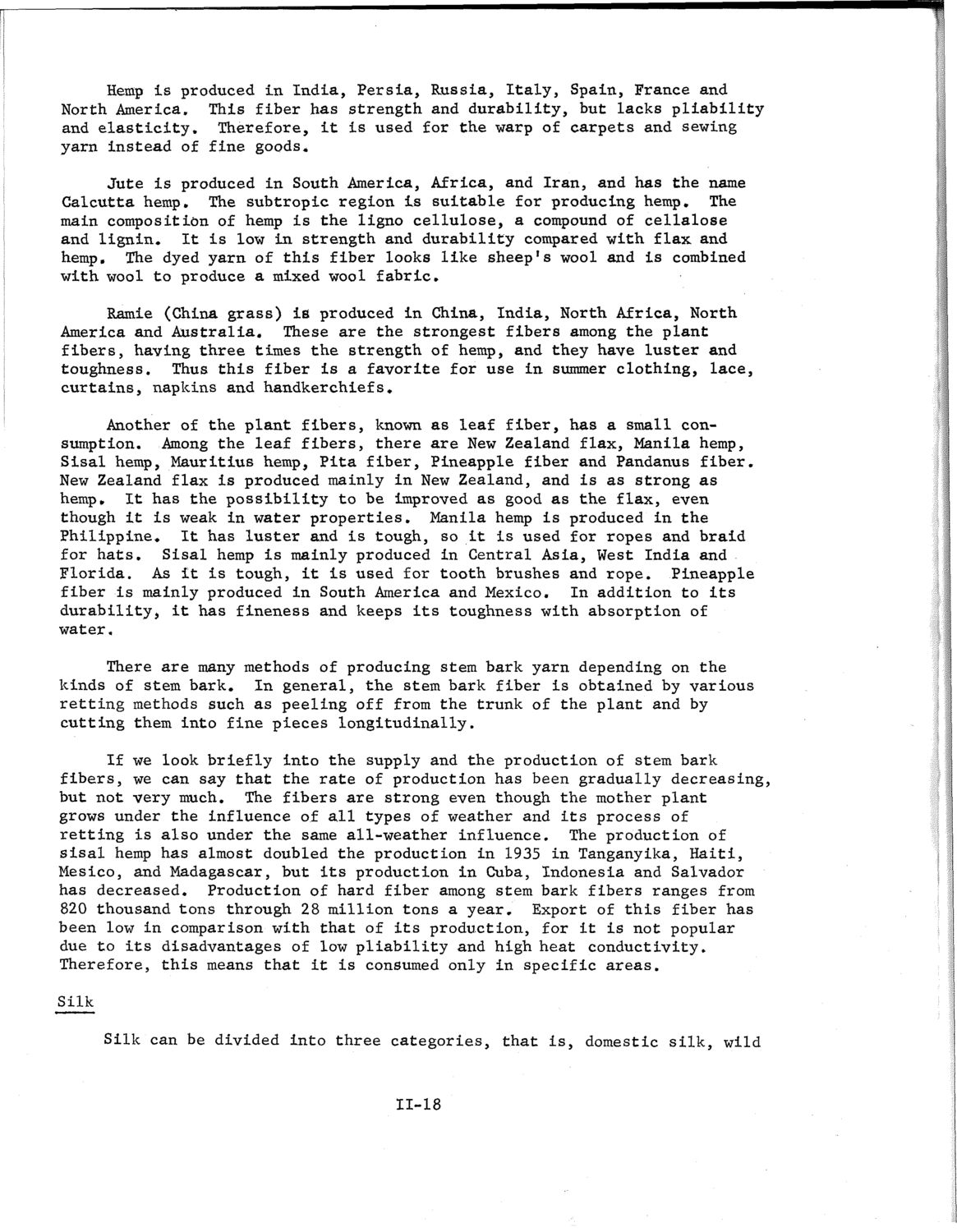| |
| |
Caption: SWE - Proceedings of the First International Conference of Women Engineers and Scientists
This is a reduced-resolution page image for fast online browsing.

EXTRACTED TEXT FROM PAGE:
Hemp is produced in India, Persia, Russia, Italy, Spain, France and North America, This fiber has strength and durability, but lacks pliability and elasticity. Therefore, it is used for the warp of carpets and sewing yarn instead of fine goods. Jute is produced in South America, Africa, and Iran, and has the name Calcutta hemp. The subtropic region is suitable for producing hemp. The main composition of hemp is the ligno cellulose, a compound of cellalose and lignin. It is low in strength and durability compared with flax and hemp. The dyed yarn of this fiber looks like sheep's wool and is combined with wool to produce a mixed wool fabric. Ramie (China grass) is produced in China, India, North Africa, North America and Australia. These are the strongest fibers among the plant fibers, having three times the strength of hemp, and they have luster and toughness. Thus this fiber is a favorite for use in summer clothing, lace, curtains, napkins and handkerchiefs. Another of the plant fibers, known as leaf fiber, has a small consumption. Among the leaf fibers, there are New Zealand flax, Manila hemp, Sisal hemp, Mauritius hemp, Pita fiber, Pineapple fiber and Pandanus fiber. New Zealand flax is produced mainly in New Zealand, and is as strong as hemp. It has the possibility to be improved as good as the flax, even though it is weak in water properties. Manila hemp is produced in the Philippine. It has luster and is tough, so it is used for ropes and braid for hats. Sisal hemp is mainly produced in Central Asia, West India and Florida. As it is tough, it is used for tooth brushes and rope. Pineapple fiber is mainly produced in South America and Mexico. In addition to its durability, it has fineness and keeps its toughness with absorption of water. There are many methods of producing stem bark yarn depending on the kinds of stem bark. In general, the stem bark fiber is obtained by various retting methods such as peeling off from the trunk of the plant and by cutting them into fine pieces longitudinally. If we look briefly into the supply and the production of stem bark fibers, we can say that the rate of production has been gradually decreasing, but not very much. The fibers are strong even though the mother plant grows under the influence of all types of weather and its process of retting is also under the same all-weather influence. The production of sisal hemp has almost doubled the production in 1935 in Tanganyika, Haiti, Mesico, and Madagascar, but its production in Cuba, Indonesia and Salvador has decreased. Production of hard fiber among stem bark fibers ranges from 820 thousand tons through 28 million tons a year. Export of this fiber has been low in comparison with that of its production, for it is not popular due to its disadvantages of low pliability and high heat conductivity. Therefore, this means that it is consumed only in specific areas. Silk Silk can be divided into three categories, that is, domestic silk, wild 11-18
| |